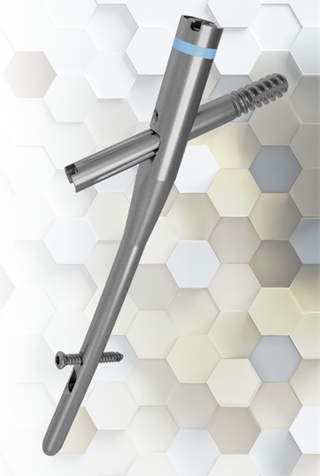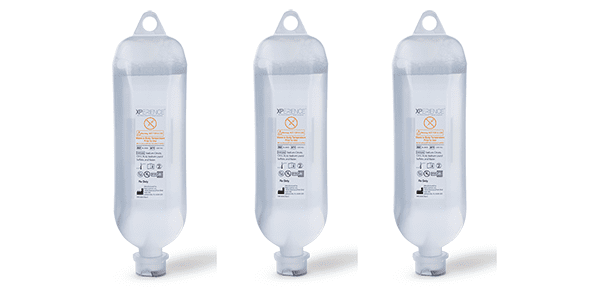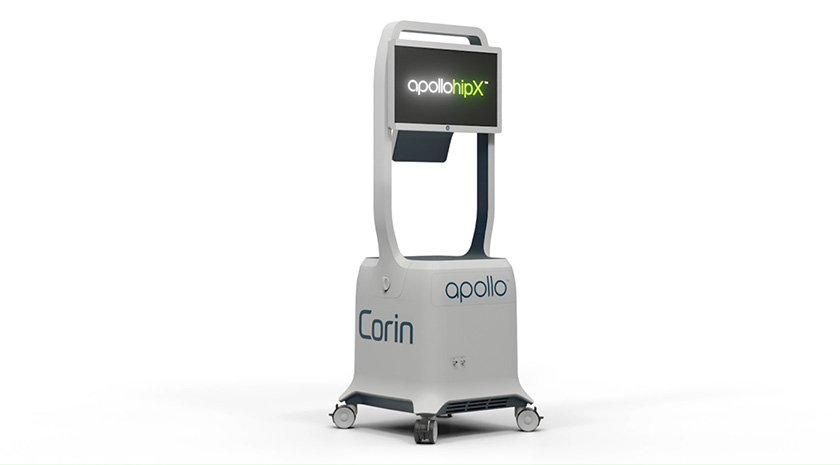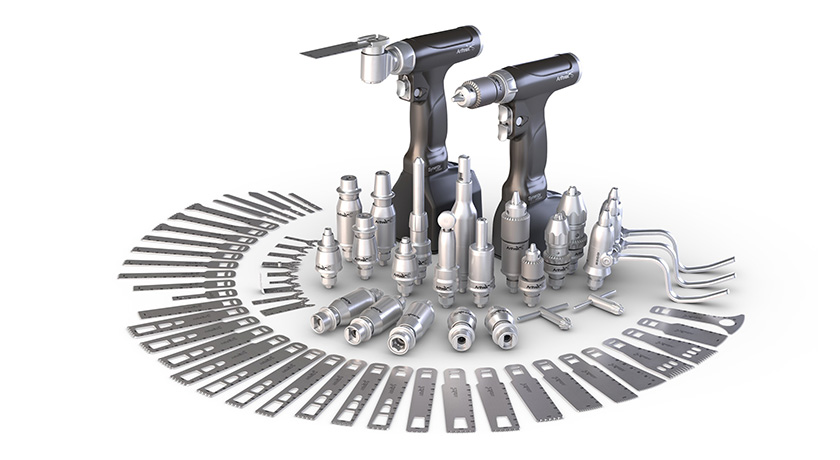
Surgical site infections remain a major problem that burden orthopedic procedures and create serious and often lethal complications for patients. Statistics cited in a 2016 article, “Orthopaedic device-related infection: current and future interventions for improved prevention and treatment,” show that infections occur in as much as 4% of elective orthopedic procedures, with far higher chances of complications in trauma surgeries, such as the 30% infection rate associated with complex open tibia fractures.
With these statistics in mind, orthopedic companies and surgeons see surgical site infection as a critical area in need of solutions. Development is underway for a new suite of technologies related to orthopedic implant surgical procedures.
Infection Prevention
Stefan Grass, M.D., Ph.D., serves as Chief Medical Officer and Deputy CEO of Bactiguard, a medical device company based in Sweden that develops infection prevention technologies across medtech.
“Bactiguard technology consists of an extremely thin but firmly attached non-releasing noble metal alloy surface impregnation,” Dr. Grass said. “The noble metals create a galvanic effect which prevents microbes from attaching to the surface. Since the microbes cannot attach, they will not be able to colonize the surface, and therefore this prevents the buildup of biofilm and subsequent device-related infection. We have primarily attached the technology to medical devices to prevent device-related infections.”
Bactiguard’s surface coating technology differs from other solutions because it’s not harmful to human tissue and doesn’t unwittingly bolster antimicrobial resistance, Dr. Grass said.
“Our technology does not kill the microbes; it just makes life difficult for them since they cannot colonize the surface,” he said. “Other technologies eventually run out of substances to release, which leads to a short period of efficacy, whereas the Bactiguard technology is effective for a long period of time. Since the Bactiguard surface is non-releasing, it makes the technology very safe. To date, there have been more than 200 million catheters with Bactiguard technology used without any adverse events related to the technology.”
Bactiguard’s experience in orthopedics includes a collaboration with Zimmer Biomet. Bactiguard’s noble metal alloy coating is applied to Zimmer Biomet trauma products, such as its intramedullary nail. The Zimmer Natural Nail was launched in Europe last year and a post-market clinical study is underway.
“Since the technology is extremely versatile, it can be applied to a wide variety of materials – there are almost endless opportunities,” Dr. Grass said. “However, that is also the challenge, to focus and find the most medically and commercially relevant areas to proceed with.”

Zimmer Biomet’s Zimmer Natural Nail uses Bactiguard’s noble metal alloy coating.
Infection Detection
While many technologies are being developed to prevent implant-related infections or mitigate their worst impacts, some are focused on detection and data collection as methods for addressing the issue.
“Hip, knee and shoulder are great operations. No question about it,” said Mathias Bostrom, M.D., Chief of the Adult Reconstruction and Joint Replacement Service at the Hospital for Special Surgery (HSS). “The downside, unfortunately, is that a very small percentage can get infected. The problem is that we can’t just wash out the joint and give you a ton of antibiotics because we still have all this retained hardware in there. We can’t take that out. So one of the challenges we have is not only treatment but also diagnosis. We never really know what the organism is that’s caused [the infection]. The only way to find out is to put a needle in the hip or the knee and pull out the fluid.”
Dr. Bostrom went on to detail the antiquated and time-consuming method of growing bacteria in a culture and waiting until it grows to identify it. Alongside a large team, Dr. Bostrom has developed a faster, less intrusive method for identifying infections using cell-free DNA.
“Cell-free DNA is the genetic material that’s floating around in your bloodstream. It will give you a signal that an organism has been in blood and that there is an infection taking place,” he said. “I started looking at cell-free DNA in pregnancy to look for abnormalities. But this is now applied to infections.”
The team worked with the medical technology firm Karius to discover that the method could detect infections in joint replacement patients via a simple blood test rather than pulling fluid out of knees, hips and shoulders. According to Dr. Bostrom, this method of infection detection allows experts to recognize specific sensitivities related to bacteria and identify multiple organisms, an asset not available through conventional methods.
Even more important than detecting a surgical site infection is knowing when to intervene with the problem.
“Treating the infection means usually taking everything out, cleaning it out, applying an IV and antibiotics, and then finally time to put a new knee or hip in the patient,” Dr. Bostrom said. “We never really know when it is the right time to take these steps. But this technology could be very useful in that setting. If the cell-free DNA is negative, it’s probably a good time to replant it. On the other hand, if the cell-free DNA sample is still positive for an infection, we gotta be aggressive and do something different, not put a brand new hip or knee in there.”
Infection Reduction
Next Science, an Australia-based medtech company, has developed a product called XBIO that it calls “a proven solution to biofilm.” Biofilm is a complex structure of microbiome that adheres to surfaces such as implants and chronic wounds.
Matthew Myntti, Ph.D., Next Science’s Chief Technology Officer and inventor of XBIO, explained how its non-toxic platform combats biofilm by breaking down its molecular armor. When bacteria lay out on a surface, Dr. Myntti said, they form a protective long-chain sugar layer that is held together from iron, which is found in blood.
“That’s what ends up painting all those polymers together to form a slimy protective armor coat over the bacteria,” Dr. Myntti said. “So the way the XBIO works is it’s a combination of an acid on its conjugate base. That’s citric acid and sodium citrate, and it’s at four pH. If you were just to add citric acid and get four pH, it would be rapidly consumed. So we add sodium citrate in there, and that maintains the four pH over time.”
XBIO dismantles the biofilm’s structure by removing the metal ions that hold its protective layer together. Bacteria trapped within the XBIO are then destroyed by the combination of a surfactant and high osmotic imbalance. The technology also helps to stave off future biofilm reformation, and reduces the rate of recurrence by over 100X, according to the company.
“This is the first technology for humans in the marketplace that takes down the biofilm,” said Next Science’s Managing Director Judith Mitchell. “Now, there are technologies that take the biofilm off the bottom of your boats, and those are called chisels. You take the biofilm off your teeth every day with the toothbrush. But within the human tissue human space, there is nothing else that is able to go in and disperse the biofilm.”
In April 2021, Next Science received FDA 510(k) clearance to market XPERIENCE, which is primarily used in orthopaedic procedures, including shoulder, hip, knee, trauma and podiatry surgeries. Also in 2021, the company commenced a clinical trial in the U.S. for its XPERIENCE No Rinse Antimicrobial Solution. The TIFRAX (Tibial Fracture) Study is a randomized, controlled, double-blinded, prospective study to evaluate the efficacy of the technology in helping to decrease wound bioburden and surgical site infections.

Next Science received FDA 510(k) clearance for its XPERIENCE No Rinse Antimicrobial Solution. The solution is primarily used in orthopedic surgeries, such as knee, hip and shoulder replacement and trauma procedures.
Future Technology
According to statistics cited by Next Science, bacterial infections are estimated to kill more people than cancer by 2050. Those numbers have pushed numerous companies to commercialize technologies in the orthopedic infection space.
aap Implantate is developing an antimicrobial silver coating technology and in mid-2021 completed its first surgery – an ankle fracture – with its implant. Silver Bullet Therapeutics received an expanded CE Mark for its silver-coated bone screw. Garwood Medical announced the closing of its Series C funding round in 2021. Garwood is developing BioPrax™ technology to treat antibiotic-resistant bacterial biofilm infections associated with metallic orthopedic implants, and has a Breakthrough Device Designation from FDA.
The technologies that will ultimately be adopted by the orthopedic device industry will be strong enough to withstand rigorous scientific and regulatory scrutiny. It’s likely that larger orthopedic companies will look to partner with others firms specializing in the space.
From technology aimed at detection to methods that aim to disrupt biofilm or dismantle it altogether, an array of solutions are being deployed to address this growing problem. If the current technologies being developed are any indication, there won’t be a single solution to this problem, but a patchwork of options aimed at prevention, fast and precise detection, and eradication.
PM
Patrick McGuire is a BONEZONE Contributor.




